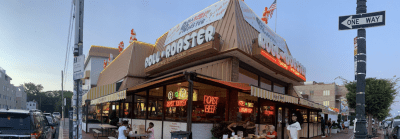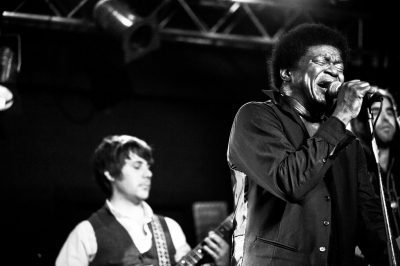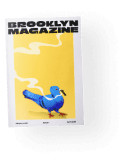Talking With: Bat For Lashes On The Bride As A Journey Through Grief
When Natasha Khan set out to write The Bride, Bat for Lashes’ fourth studio album, today on Parlophone, she scribbled down 12 song titles as an outline, as if she were writing a novel. The story had been swirling around in her head for a while: the bride, overwhelmingly in love with her fiancé Joe, discovers he was killed in a car crash while she’s waiting in the church. Devastated, and boiling over with anger, she escapes the wedding and squeals off in her getaway vehicle to take their honeymoon alone. As for the rest of it, Khan had to keep writing to find out what would happen next.
Perhaps her most ambitious album yet, the idea for The Bride was spawned from her quest to write a feature-length film, which she still plans on finishing and using The Bride for its soundtrack. In the meantime, Khan wrote and released “I Do,” a short film with a similar plot that debuted at Tribeca Film Festival as part of a series called “Madly” in April.
Though her videos have always been quite spectacular–see “Laura” or “Daniel” for past examples–this album is much more visually ambitious than her past work. The Bride comes after a bit of a break for Khan, who released her last record, The Haunted Man, in 2012. (Her debut, Two Suns came in 2006, and her second album, Fur And Gold in 2009).
“To me, the album is almost the side posts on the road–but the film will be all the details in between,” Khan tells me, while nestled on a cozy couch in the Warner Music office. Each song of the album, which was recorded at a house out in Woodstock, represents a stage of grief. The side posts of the story are anger, trauma, denial, numbness, reflection, strength and–spoiler alert–acceptance. It’s the shedding of romantic ideals and learning to love yourself instead of expecting someone else to do it for you.
“I had the headings and the chapters and then I just had to fulfill each song’s obligation to get to the end of the story,” Khan said about writing the titles before the material. “It was really self-contained, just a really beautiful way of doing it. It felt really balanced and like they were all slipping into place.”
The Bride begins with a toy-sounding harp, emphasizing the fluttering, childlike innocence of the bride on the night before her wedding. “All the gray skies will blow away,” she sings hopefully on “I Do.” Her naïveté is washed away when Joe appears at her window with an eerie feeling in “Joe’s Dream,” a song so minimalistic it’s expansive–with a guitar line like a death march and echoes like a choir of angels.
Next, in “In God’s House,” all hell breaks loose. She’s standing in the church with a vision that Joe has died: “Dewy eyes, lashes long / for my love, but something’s wrong.” The organ is almost alien and a sci-fi synth dots the track with arpeggios as the bride’s gut feeling spreads throughout her. The bells toll and she dashes out to her honeymoon car and into the wilderness, following a map that Joe made her.
Trauma follows her everywhere in “Sunday Love,” one of the more beats-driven tracks on the album, representing the locomotive motions she’s miming as she flees from the thought of living without Joe.
“This character ‘Sunday Love’ is turning up in her bed like everywhere she goes, she’s like this cold grip,” Khan explains. “Like, you know when something really bad happens? And you wake up the next morning and then you feel OK and then you remember what happened? It’s almost like trauma on your tail.”
The way Khan speaks, it’s almost as if she’s lived the bride’s story. There’s no doubt that some of it’s autobiographical.
“When you write your first novel, people always say like ‘Don’t tell a writer about your life,’” she said. “But I feel like I’ve been noticing people and characters and weird events that happen to me, or in documentaries I’ve seen, and things even from years ago that are now turning up as characters in this story. It’s really weird, like to think that they’ve been in the back of my mind all this time waiting, and they were meant for something, and it wasn’t just like everyday life. It’s this funny synchronicity about life and creativity.”
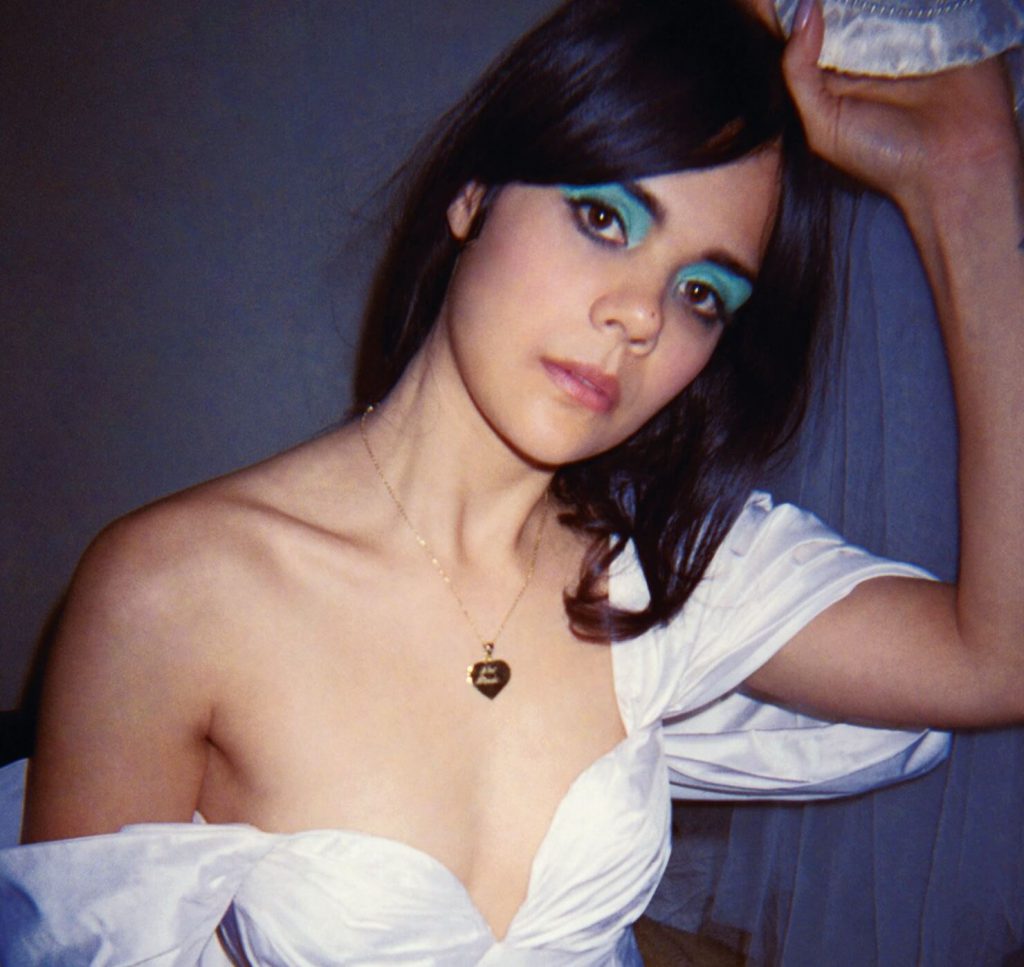

Leading up to its release, she took the album to old churches in the UK and the States, playing her new songs to a makeshift wedding party in a scarlet dress and a black veil. The night before her Brooklyn show, a chunk of ceiling fell from the Saint Ann’s Church during soundcheck, so she had to relocate to a regular venue, but fans still attended in formal wedding attire. Some cried as Khan–as the bride–softly sang about her love lost.
The scarlet dress from her church shows is another one of these weird coincidences that ended up in the bride’s journey. While shopping with her family, she saw the frock and knew she had to have it, but not quite sure why.
For the album, Khan also picked up the mystic energy of sci-fi movies from her ‘80s childhood. The dress she wears in the album’s corresponding music videos is a off-the-shoulder prom dream gown. The bride’s neon eyeshadow is as bright and dramatic as ever. The hazy, “alien” green of the album’s cover is duplicated when she sings about communicating with Joe’s spirit in the song “Close Encounters,” which also carries that mysterious, celestial vibe–“It makes me think of ET and Cocoon, those ‘80s effects,” she says of the visuals.
http://www.youtube.com/watch?v=Ds9eR3UbOXk
The low-lying, atmospheric strings of “Close Encounters” sound like they’re coming from a distant planet, as Khan sings some of the most heart-breaking lyrics on the record: “You know that I love you til the stars don’t shine / You know that you’ll always fill this heart of mine / I could never forget with time / all our close encounters.” It’s her love song to the deceased as she tries to move on. But in “Widow’s Peak,” she learns that it’s harder than she thought: “I just want to die,” she sings.
With just an album’s amount of time to go through the grieving process, it’s not long before she’s setting herself free on “Land’s End,” an uplifting, orchestral cocktail garnished with a sprig of sensuality. By “If I Knew” and “I Will Love Again,” she’s beginning to find herself. It might be alarming to rise above death so quickly, but as Khan points out, the bride and Joe are just characters playing out an important lesson.
“The death of her fiance is like the most obvious storytelling aspect, but if you remove that, the metaphor for me is, it’s not as sad because it’s about the death of the projection of romantic idealized love onto somebody else,” Khan said. “And the projection that someone else will complete you and fulfill you and you’ll meet them and your life will be perfect. It’s the death of that kind of romantic ideal, which I don’t think is very helpful to us anyway.”
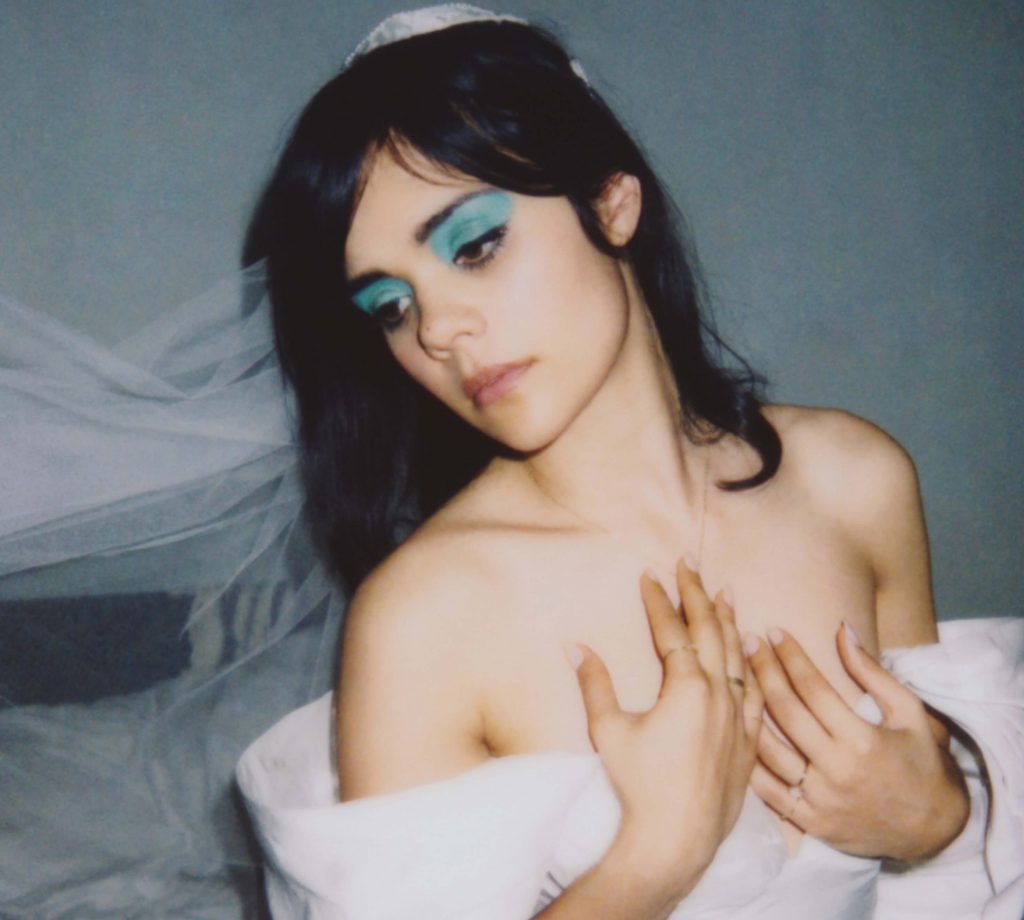

The album ends with “In Your Bed,” a sweet love song to Joe that Khan calls “the end credits, where you have flashbacks of them falling in love.” It proves that even though she’s gained more through his death, she’ll always be indebted to him. She’ll never forget him.
At the end, the bride is wise, she’s ready to love again (with Joe as her angel) and she depends more on herself than anyone else.
“The beginning of her journey was set in stone because I already made the beginning of the journey in my life,” Khan says. “And then the end of the album is almost like a key I had to unlock and then finish the journey. Now I understand where I was supposed to end up.”
The Bride is out today via Parlophone. Get it here.
You might also like 














